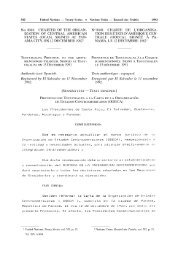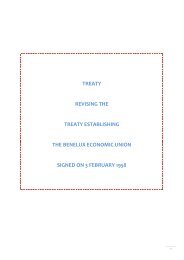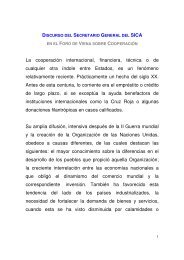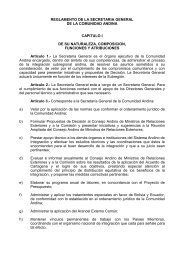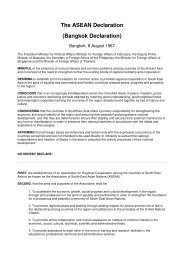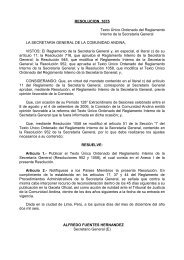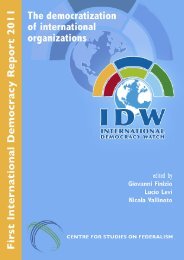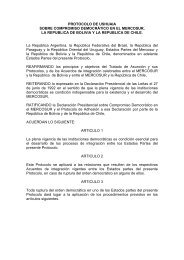Korwa G. Adar - International Democracy Watch
Korwa G. Adar - International Democracy Watch
Korwa G. Adar - International Democracy Watch
Create successful ePaper yourself
Turn your PDF publications into a flip-book with our unique Google optimized e-Paper software.
East African Community – <strong>Korwa</strong> G. <strong>Adar</strong>federation in 1964 reiterating, among other things, that, “we believe a politicalfederation of East Africa is desirable by our people. There is throughout East Africa agreat urge for unity and an appreciation of the significance of federation” (East AfricanCommunity Secretariat, no date: 30-31). The decision by the three East African leadersto opt for a political federation as opposed to economic cooperation agreement wasinfluenced by two main factors such as similar historical experiences and Pan-Africanistaspirations sweeping the continent at the time of decolonization. However, theindependence national interest realities undermined the drive for political federation.Realising that political federation objective was not achievable, the East Africanpolitical and ruling elites under the leadership of Kenyatta, Nyerere and Obotereconceptualised their strategy by opting for economic-driven neo-functionalist-cumfunctionalistregional integration process. Following the 1966 recommendationscontained in Kjeld Philip report, in 1967, the leaders signed the East African Cooperationtreaty, which established the EACI, with economic cooperation as thedriving force. 4 Specifically, in Phase IV, integration process in the East African regionwas guided by the principle of joint ownership of common services as the key to the EACoperational functions (<strong>Adar</strong> 2005: 37).3.2. The 1967 EAC: governance structuresThe key organs of the EAC included the East African Authority, the East AfricanLegislative Assembly, the East African Ministers, the 5 Councils (the Common MarketCouncil, the Communications Council, the Economic Consultative and PlanningCouncil, the Finance Council, and the Research and Social Council), the Tribunals, theEast African Community Services Commission, the East African Industrial Council, and theEast African Development Bank. The East African Authority (or simply the Authority)consisted of the three presidents. The members of the East African Legislative Assemblycomprised of the 3 East African Ministers, 3 Deputy East African Ministers, and 27appointed members of EALA (9 from each partner state), the Chairman of theAssembly, the Secretary General and the Counsel to the EAC (Delupis 1970: 59-60).4 Prof. Kjeld Philip, the former Danish Minister of Trade and Finance was chosen by the three EastAfrican leaders to study the feasibility of establishing an EAC. For purposes consistency, the acronymEAC will be used in this study to refer to the EAC I and the EAC II. The name East African Communityhas been retained even with the accession to the treaty by Burundi and Rwanda in 2006.




